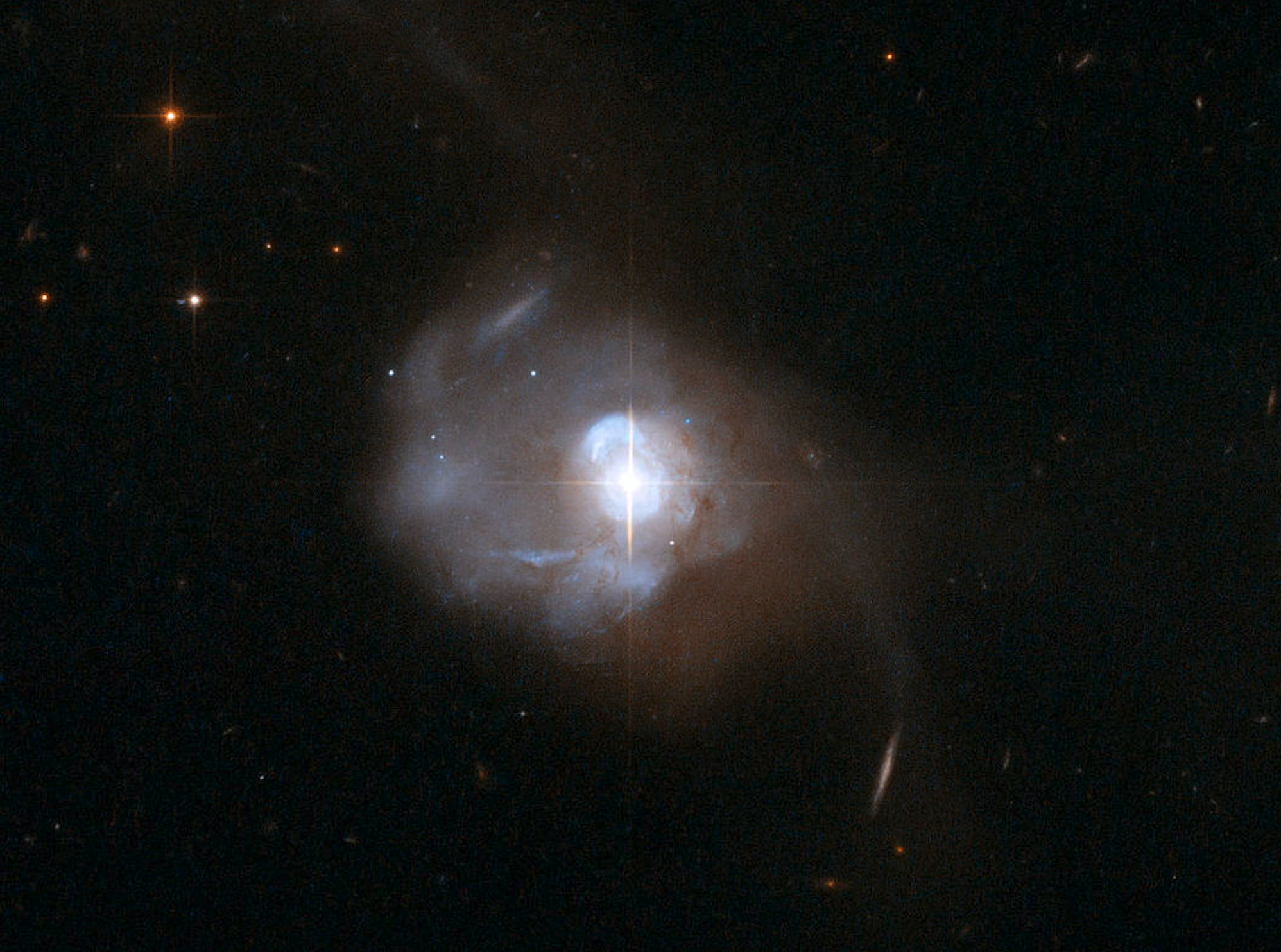Scientists Found Breathable Oxygen in Another Galaxy for the First Time

Credit to Author: Becky Ferreira| Date: Thu, 20 Feb 2020 18:56:58 +0000
Astronomers have spotted molecular oxygen in a galaxy far far away, marking the first time that this important element has ever been detected outside of the Milky Way.
This momentous “first detection of extragalactic molecular oxygen,” as it is described in a recent study in The Astrophysical Journal, has big implications for understanding the crucial role of oxygen in the evolution of planets, stars, galaxies, and life.
Oxygen is the third most abundant element in the universe, after hydrogen and helium, and is one of the key ingredients for life here on Earth. Molecular oxygen is the most common free form of the element and consists of two oxygen atoms with the designation O2. It is the version of the gas that we humans, among many other organisms, need to breathe in order to live.
Yet despite its ubiquity and significance to habitability, scientists have struggled for decades to detect molecular oxygen in the wider cosmos.
Now, a team led by Junzhi Wang, an astronomer at the Shanghai Astronomical Observatory, reports the discovery of molecular oxygen in a dazzling galaxy called Markarian 231, located 581 million light years from the Milky Way.
The researchers were able to make this detection with ground-based radio observatories. “Deep observations” from the IRAM 30-meter telescope in Spain and the NOEMA interferometer in France revealed molecular oxygen emission “in an external galaxy for the first time,” Wang and his co-authors wrote.
Earth’s atmosphere absorbs a lot of the wavelengths that are needed to detect oxygen, so it can be tricky for ground telescopes to pinpoint the element through the veil of gas that encircles the planet.
As a result, the only two detections of molecular oxygen within the Milky Way were spotted by space telescopes that didn’t have to deal with an obstructive atmosphere. Within the past 20 years, satellites have successfully detected molecular oxygen in the Rho Ophiuchi cloud and the Orion Nebula, which are respectively 350 and 1,344 light years from Earth.
Wang and his colleagues were able to detect the signature of molecular oxygen with ground telescopes in part because the light from Markarian 231 is redshifted, meaning that it was stretched into longer wavelengths as it traveled across vast stretches of space to our planet. As a result, Earth’s atmosphere was not as efficient at blocking the oxygen emissions as it would have been with a closer source.
First discovered in 1969, Markarian 231 has remained a curiosity to scientists for decades because it contains the closest known quasar, a type of hyper-energetic object. Quasars are active galactic nuclei (AGN), meaning that they inhabit the core regions of special galaxies, and they are among the most radiant and powerful objects in the universe.
Though Markarian 231 contains the same form of oxygen that is respired by humans, it’s worth noting that you couldn’t just inhale this extragalactic reservoir like some kind of quasar-based whippet. This is because the oxygen is not mixed with the right abundances of nitrogen, carbon dioxide, methane, and all the other molecules that make Earth’s air breathable to humans and other organisms.
The team sees a lot of promise in targeting energetic systems like Markarian 231 in further searches for extragalactic molecular oxygen. The new study reports about 100 times more oxygen in the distant galaxy as the previous detections within the Milky Way, most of which appears to have been blown tens of thousands of light years into the galactic outskirts by Markarian 231’s wild quasar.
The discovery “provides an ideal tool to study” molecular outflows from quasars and other AGNs, the team said in the study. “O2 may be a significant coolant for molecular gas in such regions affected by AGN-driven outflows,” the researchers noted. “New astrochemical models are needed to explain the implied high molecular oxygen abundance in such regions several kiloparsecs away from the center of galaxies.”
To that point, the researchers suggest that the next generation of radio observatories, such as the Next-Generation Very Large Array (ngVLA), could accelerate new detections of extragalactic oxygen.
From there, scientists can begin to unlock the mysteries of this element’s influence on planetary, stellar, and galactic development—and the exact role it plays in nurturing habitability.
This article originally appeared on VICE US.